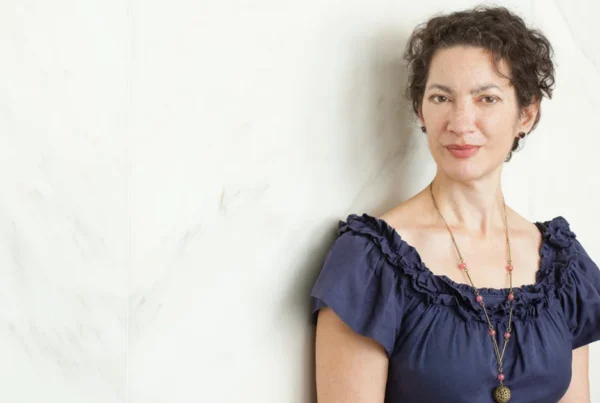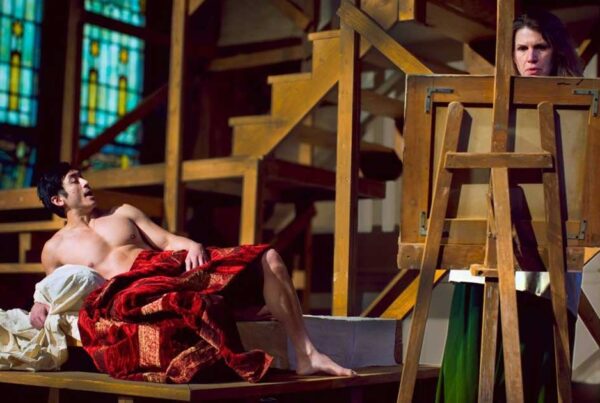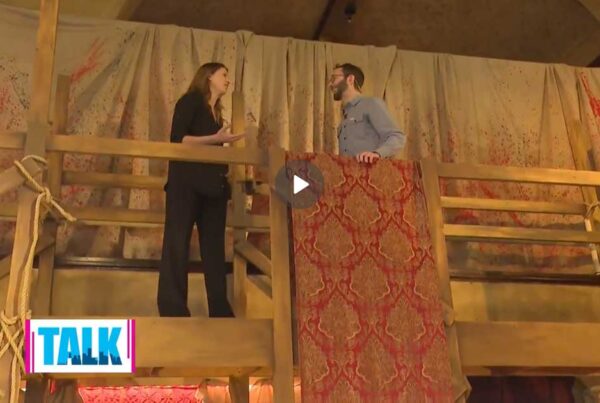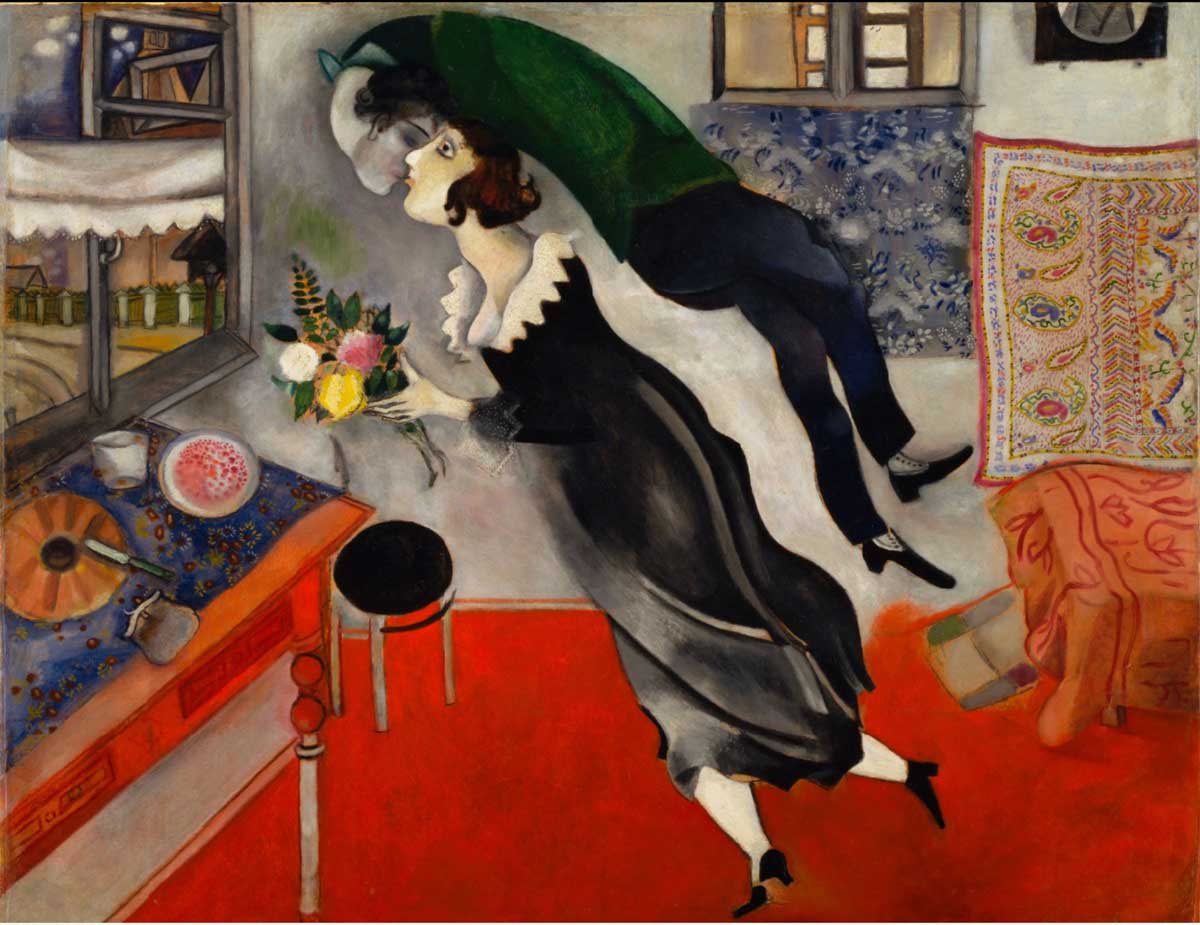
“Birthday” (1915) by Marc Chagall
The Pittsburgh Tatler – In the Yiddish love song “Tumbalalaika,” a young man poses a riddle to a young woman: “What can grow without rain or snow?/ What can blaze and never die?/ And what can weep and never cry?” Her answer (which presumably wins his heart): “A stone can grow without rain or snow/ Love can blaze and never die/ And a heart can weep and never cry.”
That song – which is woven into The Flying Lovers of Vitebsk from beginning to end – is an apt choice to capture the romance between the Jewish-Russian painter Marc Chagall (Dan Mayhak) and his wife, Bella Rosenfeld Chagall (Zanny Laird) – they were, by all accounts, intellectual and artistic equals, a pair of soulmates who revered and inspired each other. Not only was Bella as clever and capable as the woman in the song, but their love for each other is purported to have blazed hot throughout their thirty-year marriage. Daniel Jamieson, who co-wrote The Flying Lovers of Vitebsk with Ian Ross, noted that “there can be few more vivid evocations in art of how it feels to be in love” than Chagall’s paintings of himself and Bella floating in space; The Flying Lovers of Vitebsk uses lilting, soaring music to replicate those paintings’ defiance of gravity and to sweep its characters, and its audience, into their stratosphere of affection.
The framing device of the play is a phone call from Chagall’s son-in-law Franz Meyer (played by music director Douglas Levine), who wants to get Chagall to explain the meaning of his paintings. In answer to Franz’s query, Chagall goes back in time to reconjure the mystical, magical love he felt for Bella, a romance and marriage that coincided with some of the most tumultuous times in history for Russian and European Jews. Having met and fallen in love at first sight in their home town of Vitebsk in 1909, their marriage – which began in 1914 and lasted until Bella’s death in 1944 – endured two World Wars, the Russian Revolution, anti-semitic pogroms, and permanent exile.
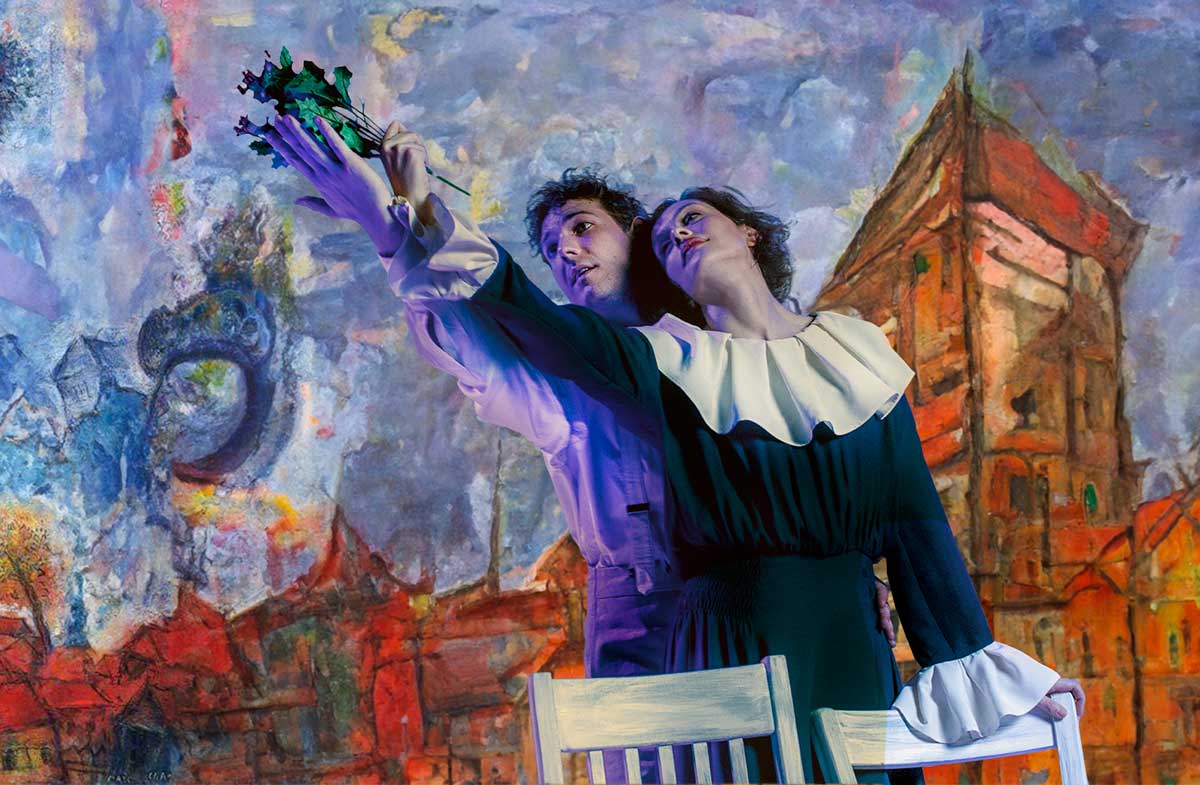
L to R: Dan Mayhak and Zanny Laird. Photo by Jason Snyder, courtesy Quantum Theatre.
Taking a cue from Chagall’s paintings, the charming production (directed by Gustavo Zajac) is episodic and expressionistic; the story is told largely through song and movement, and there’s a dreamlike quality to the staging and design that makes you feel as if you’ve been tipped into the off-kilter world of his art. Much of this effect is due to the lively, Klezmer-inflected music, played with brio by Levine on keyboard, Cara Garofalo on violin, and Lenny Young on oboe and English horn. Stephanie Mayer-Staley’s mostly white set is brought to life by Peter Brucker’s projections, which splash color across the stage much as Chagall splashed color onto his canvases. Grzegorz Labuda’s costumes also evoke the world of Chagall’s imagination – in particular, Bella seems dressed as if she were appearing in Chagall’s mind’s eye as he paints her to keep her memory alive.
The production also replicates the mystery and impenetrability of Chagall’s work – the very “hidden meaning” that Franz is trying to get at in the opening scene of the play – through what seems to be a deliberate choice not to offer supertitle translations for the lyrics of the songs the characters sing. While all of the songs are thematically relevant, if you don’t know French or Yiddish (or enough German to decipher the Yiddish) many of them largely function like the symbolic elements in Chagall’s art: that is, beautiful and evocative but also cryptic and open to be filled by your imagination. The production uses the songs much as Chagall used color – to convey emotions that exceed the expressive capacity of words and images alone.
Zanny Laird is marvelous as Bella – her vocal quality ranges seamlessly from an Edith Piaf-like cabaret style to a crystal clear, buoyant soprano, and she infuses the character with an infectious, sensuous joy. Dan Mayhak’s singing is equally confident and lovely: he has an easy, smooth voice that blends so beautifully with Laird’s that at times it sounds like there are more than just two people on stage (the outstanding sound design, by Anthony Del Grosso, may play a role in this illusion). Perhaps most importantly, Laird and Mayhak have terrific chemistry – they make it easy to believe that this is a couple that “invents a new color each night.”
That the Chagalls’ love survived some of the most trying decades of anti-semitism in world history is a testament to the resilience of their artistic spirits – both found strength in creativity, he in painting, and she in writing. It is no coincidence that Quantum chose to stage this production at Rodef Shalom synagogue and to open it on the weekend commemorating the five-year anniversary of the mass shooting at the Tree of Life synagogue; in our own time of increased anti-semitism, The Flying Lovers of Vitebsk offers a message of solidarity and strength, and a reminder that love is stronger than hate.

